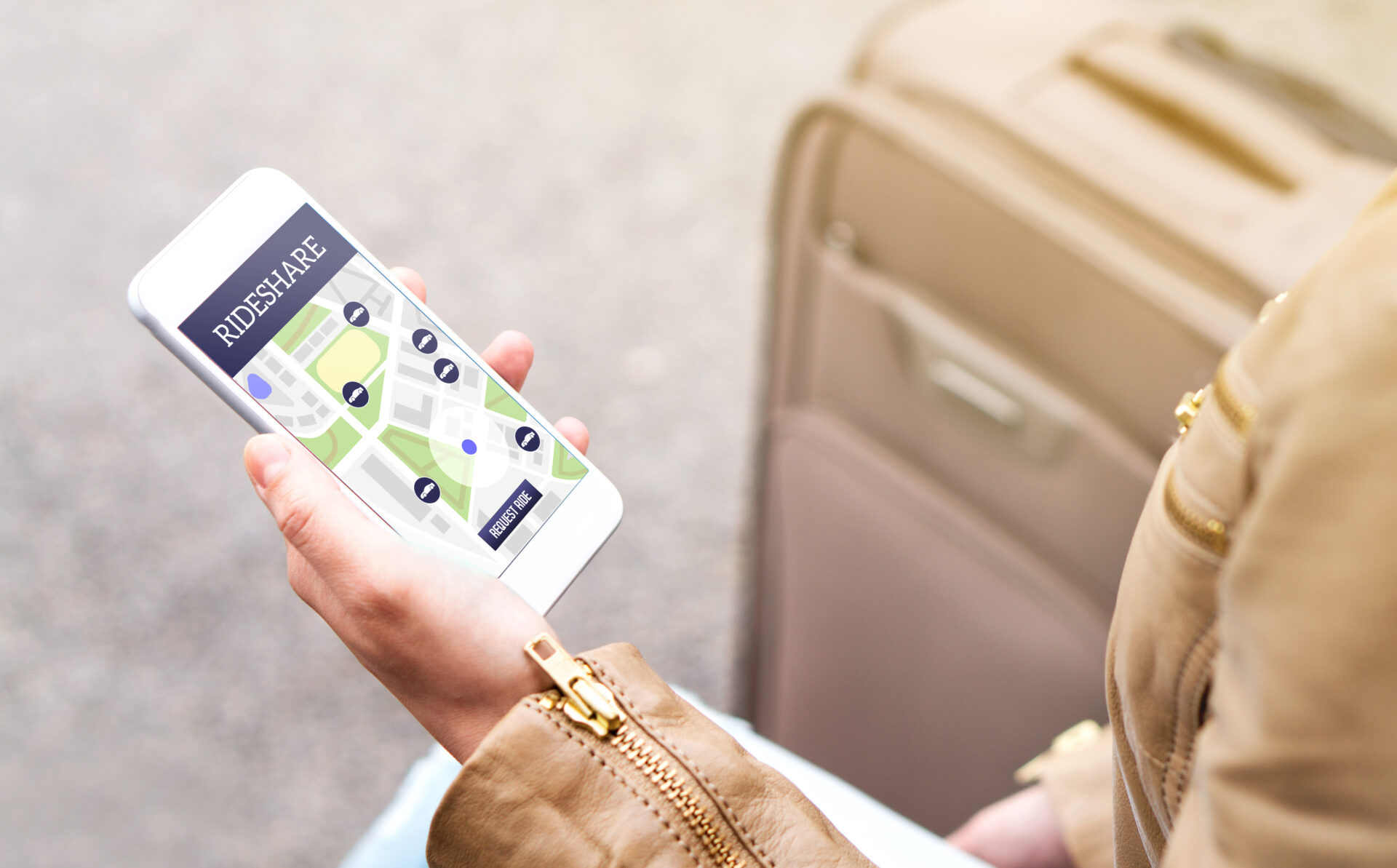How Common is Ridesharing Today?
Nationwide, more people are using rideshare services, as reported by Pew Research Center. Of the adult population, 36% report having used a rideshare app such as Uber or Lyft. This represents a significant increase over the 15% of Americans who had used ridesharing in late 2015. Ride-hailing practices are most common in urban areas, among the 18 to 29 age group, among adults with a bachelor’s degree or higher, and among people with an annual household income of $75,000 or more.
How Do Ridesharing Accidents Happen?
Like all traffic crashes, many rideshare accidents are caused by driver negligence. Common contributing factors to Uber or Lyft accidents include:
- Driver distraction: Distracted driving is anything that takes the driver’s attention away from operating the vehicle. Uber and Lyft drivers have their apps running while they work. They may be focused on navigation systems to find pick-up and drop-off locations or distracted by conversations with passengers.
- Unfamiliar routes: Rideshare drivers must go wherever customers need to be picked up or transported. They may be unfamiliar with certain routes, which can lead to missed exits or turns, sudden lane changes, unsafe maneuvers, and accidents.
- Driver inexperience: Rideshare drivers are not required to have specialized training or certification. To meet Uber driver requirements, for example, you must be old enough to drive in your city, have a valid in-state driver’s license, drive an eligible four-door vehicle, and have at least one year of driving experience (three years for drivers under 25). Inexperienced drivers are more likely to make judgment errors that lead to crashes.
- Driver fatigue: Rideshare drivers are subject to hours of service restrictions under Colorado Public Utilities Commission regulations, as stated by Lyft. Nevertheless, the more hours they work, the more money they make. Long hours behind the wheel can lead to drowsy driving, which is a dangerous type of impairment, according to the AAA Foundation.
- Speeding: Rideshare drivers earn more when they accept more fares. The more quickly they pick up and transport passengers, the more fares they can accept. Uber, Lyft, and other rideshare drivers may be tempted to speed, which can significantly increase the risk of a collision.
- Impaired driving: Although Lyft professes a zero-tolerance policy for driver alcohol and drug use, their drivers are not subject to drug testing. Instead, passengers can contact the company if they suspect a driver is under the influence. Alcohol and drugs can significantly impair driving ability and put rideshare passengers and others on the road at risk.
- Failure to obey traffic laws: The rules of the road are designed to keep all users safe. Traffic crashes can occur when rideshare drivers disregard traffic signs or signals, fail to yield the right of way, pass in no-passing zones, and perform unsafe lane changes.
Who Can Be a Victim of a Rideshare Accident?
When a rideshare driver is involved in a collision, any passenger the driver is carrying is at risk of injury. However, passengers are not the only victims of rideshare accidents. Pedestrians and bicyclists can be struck down by rideshare vehicles when their drivers are distracted, disregard traffic signs or signals, or fail to yield the right of way.
Motorcyclists can suffer severe or fatal injuries in collisions caused by Uber or Lyft drivers who are tailgating, speeding, or otherwise violating the rules of the road. Other drivers and their passengers can be seriously injured in crashes caused by negligent rideshare drivers.
How Is Liability Determined in a Colorado Rideshare Accident?
Colorado is an at-fault state for car accidents. Damages are covered by the insurance company of the driver at fault for the crash. Under our state’s modified comparative negligence laws, any party involved in a crash may be assigned some percentage of fault and damages an injured party is entitled to recover, which are reduced accordingly. For example, if an accident victim is awarded $100,000 in damages and found to be 10% at fault for the crash, the recovery will be reduced by 10% to $90,000. To recover damages, an injured party must be found to be less than 50% at fault.
To establish liability, you must show that the driver who caused the accident was negligent, meaning he or she breached a duty of care. A rideshare driver may breach their duty of care in any number of ways. Examples of negligent driving behavior include speeding, driving recklessly, driving under the influence, violating Colorado regulations restricting the number of driving hours, or becoming distracted behind the wheel. Rideshare companies, such as Uber and Lyft, may be held liable for rideshare accidents if company negligence caused or contributed to the crash. A company may be found negligent if it hires an unqualified driver or one with a criminal record or a history of DUIs.
Who Is Financially Responsible for Rideshare Accidents?
While all drivers in Colorado are required to carry minimum liability insurance, rideshare company insurance may apply in certain situations:
- If a crash occurs when the driver has logged into the app and is waiting for a fare, company insurance covers $50,000 bodily injury per person and $100,000 per accident.
- If an accident happens when the driver is transporting or on the way to pick up a passenger, rideshare company insurance of up to $1 million applies.
Your best chance of recovering maximum compensation for a rideshare accident is to have an experienced Colorado personal injury attorney handling your claim. At Genco Injury Attorneys, we specialize in motor vehicle accidents. Contact us at (720) 802-9120.

